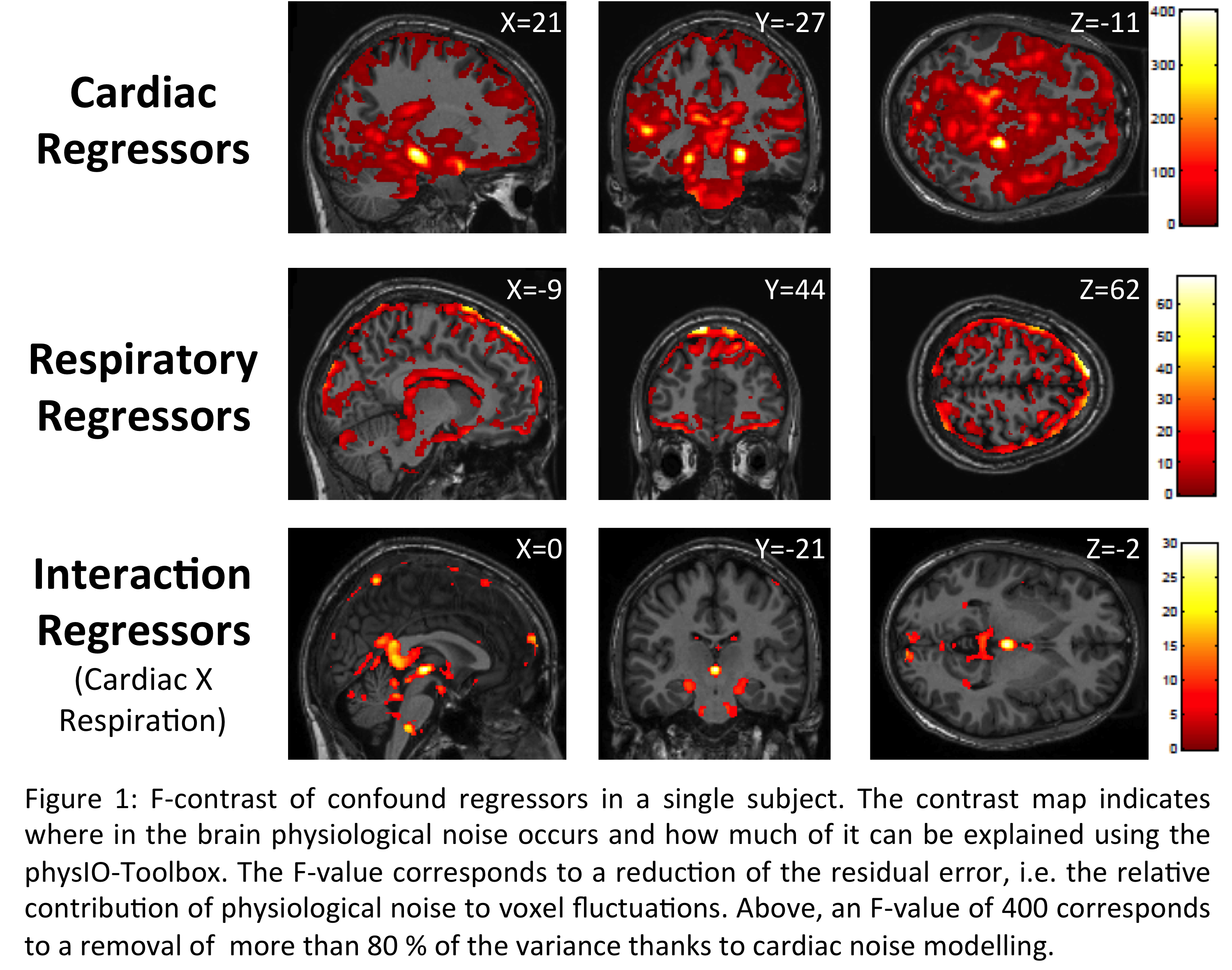PhysIO Toolbox
Purpose
The general purpose of this Matlab toolbox is the model-based physiological noise correction of fMRI data using peripheral measures of respiration and cardiac pulsation.
The PhysIO Toolbox can be downloaded as part of the TAPAS software collection of the TNU and integrates with SPM via the Batch Editor GUI.
Core design goals for the toolbox were: flexibility, robustness, and quality assurance to enable physiological noise correction for large-scale and multi-center studies.

Highlights
- Robust preprocessing via iterative peak detection, shown for noisy data and patients.
- Flexible support of peripheral data formats (Siemens, Philips, GE, Biopac, ...) and noise models (RETROICOR, RVHRCOR).
- Fully automated noise correction and performance assessment for group studies.
- Integration in fMRI pre-processing pipelines as SPM Toolbox (Batch Editor GUI).
Details
The PhysIO Toolbox provides model-based physiological noise correction of fMRI data using peripheral measures of respiration and cardiac pulsation. It incorporates noise models of cardiac/respiratory phase (RETROICOR, Glover et al. 2000), as well as heart rate variability and respiratory volume per time (cardiac response function, Chang et. al, 2009, respiratory response function, Birn et al. 2006). The toolbox is usable via the SPM batch editor, performs automatic pre-processing of noisy peripheral data and outputs nuisance regressor files directly suitable for SPM (multiple_regressors.txt).
Download
The PhysIO Toolbox is part of the TAPAS software collection of the TNU.
Please download its latest stable release via GitHub.
Older or newer, bug-fixed versions are available on request to kasper@biomed.ee.ethz.ch.
Documentation
In order of detail, please refer to the following sources for documentation of recent PhysIO versions:
- Complete README (extended version of this page with background and version history)
- GitLab Wiki with FAQs, tips and tricks
- Technical Paper (methodology and rationale, use cases): https://doi.org/10.1016/j.jneumeth.2016.10.019 (open access)
- PDF Manual (deprecated)
- Chapter (PhD Thesis 2014, concepts valid, code deprecated)
(1), (2) and (4) can also be found in the downloaded version of the toolbox.
Old Documentation (before R2017): Examples | GettingStarted | Handbook
Support
The developers are very happy to provide support on how to use the PhysIO Toolbox. However, as every researcher, we have only a limited amount of time to spend on supporting other projects, in order to also be able to pursue our own. So please forgive us in advance, if we might not provide a detailed answer to your request, but just some general pointers and templates. Before you contact us, please try the following:
- A first look at the FAQ (which is frequently extended) might already answer your questions.
- A lot of questions have also been discussed on our mailinglist (tapas(at)sympa.ethz.ch), which has a searchable archive.
- For new requests, we would ask you to submit them as issues on our github release page for TAPAS.
Versions
Current Version: R2019b (Aug 20, 2019)
Changelog of current and previous versions
Main Reference
The accompanying technical paper about the toolbox concept and methodology can be found at: https://doi.org/10.1016/j.jneumeth.2016.10.019
Please cite this paper when using the toolbox.

